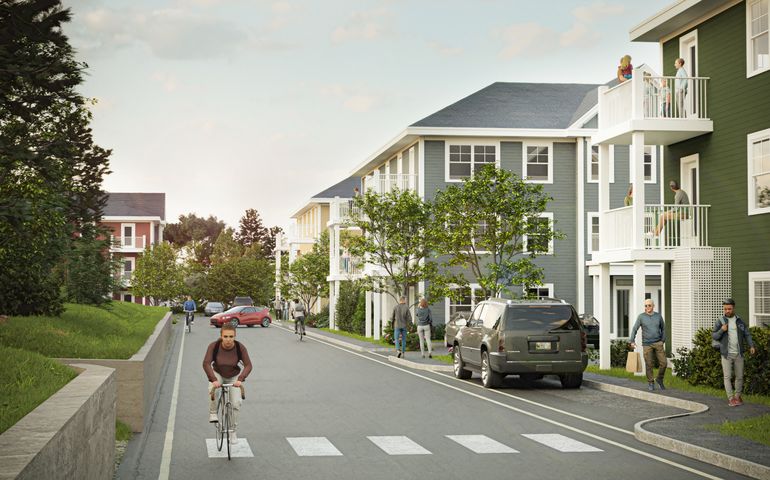A Portland development will be the first under new affordability rules
 Courtesy / Kevin O'Rourke
Rendering of the Winchester Woods development in Portland's East Deering neighborhood.
Courtesy / Kevin O'Rourke
Rendering of the Winchester Woods development in Portland's East Deering neighborhood.
The Winchester Woods development in Portland’s East Deering neighborhood recently received final planning board approval, becoming the first project approved under regulations passed last year to require more affordable housing in new construction.
The 48-unit project will feature 24 one-bedroom units, and 24 two-bedroom units. Blended throughout those are the 12 units that are required to be affordable to people making 80% of the area median income, which is $56,504 for a single person and $64,526 for a two-person household.
Yarmouth-based developer Kevin O’Rourke, who also has a 16-unit condominium complex in East Bayside, aims to break ground on the project in November with completion of the first building in April 2022. The entire project will be completed by the end of 2022, he said.
The rents for the market-rate apartments have not yet been set, O’Rourke said. The rates for the affordable units will be set by the city.
The price tag for the project, which sits on 3.4 acres of land, is about $7 million to $8 million, O’Rourke said.
The project features four buildings, as well as one-third of an acre of recreational green space.
Working under the new affordability requirements of the Green New Deal, which was enacted by voters last year, made the project more complicated, O’Rourke said.
“It certainly does make it more challenging,” O’Rourke said.
Christine Grimando, Portland’s director of planning and urban development, confirmed that the project was the first new construction approved under the new law that requires 25% of units be affordable to people making 80% of the area median income.
He pointed to two factors that allowed the project to be successful: the acquisition of the land at a low price and the development under a Planned Residential Unit Development provision, which gave him a 25% density bonus.
“Based on my ability to submit under a PRUD, I was able to build 25% more units. So that’s the 12 units needed for affordability requirements. Most people won’t be able to qualify because it requires a minimum lot acreage,” O’Rourke said.
He said he was able to acquire the land at relatively low price because it sat undeveloped since 1864 and included a so-called “paper street” that existed on maps but was never developed. The complicated process of designing around the “paper street” probably scared off most other potential buyers, O’Rourke said.










0 Comments